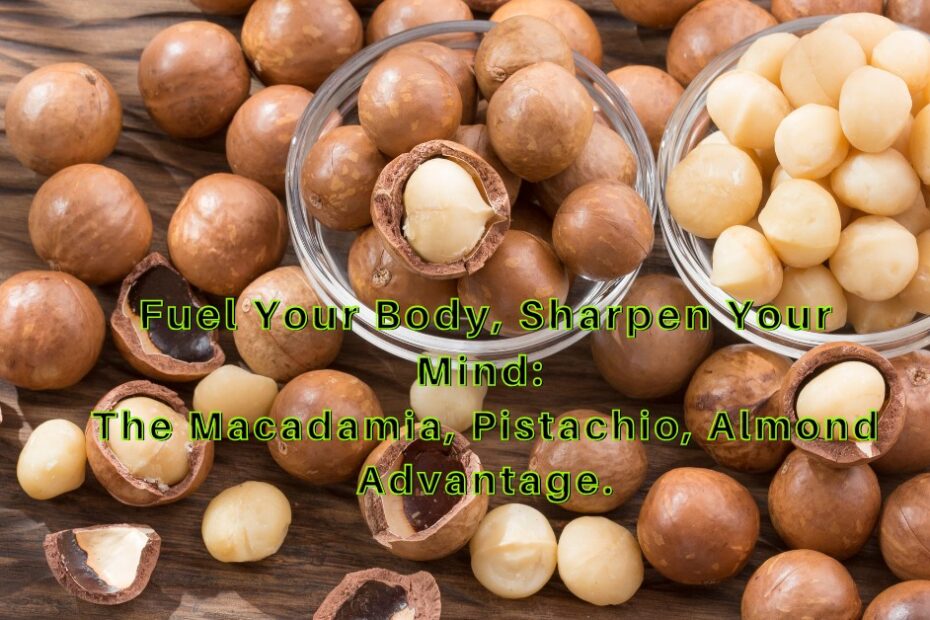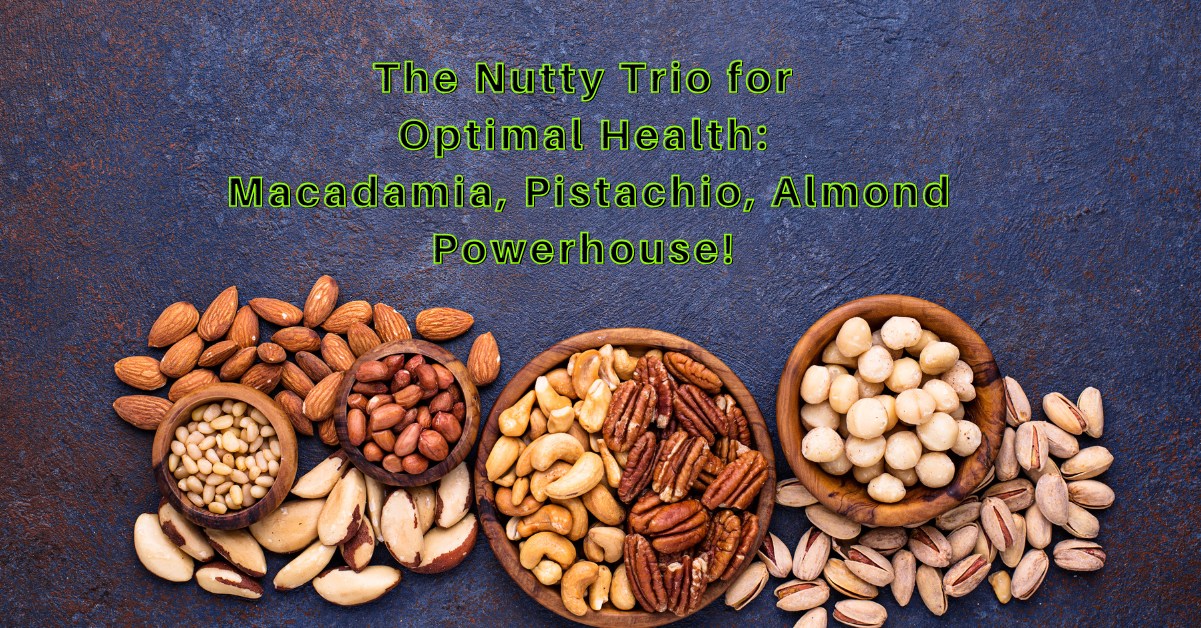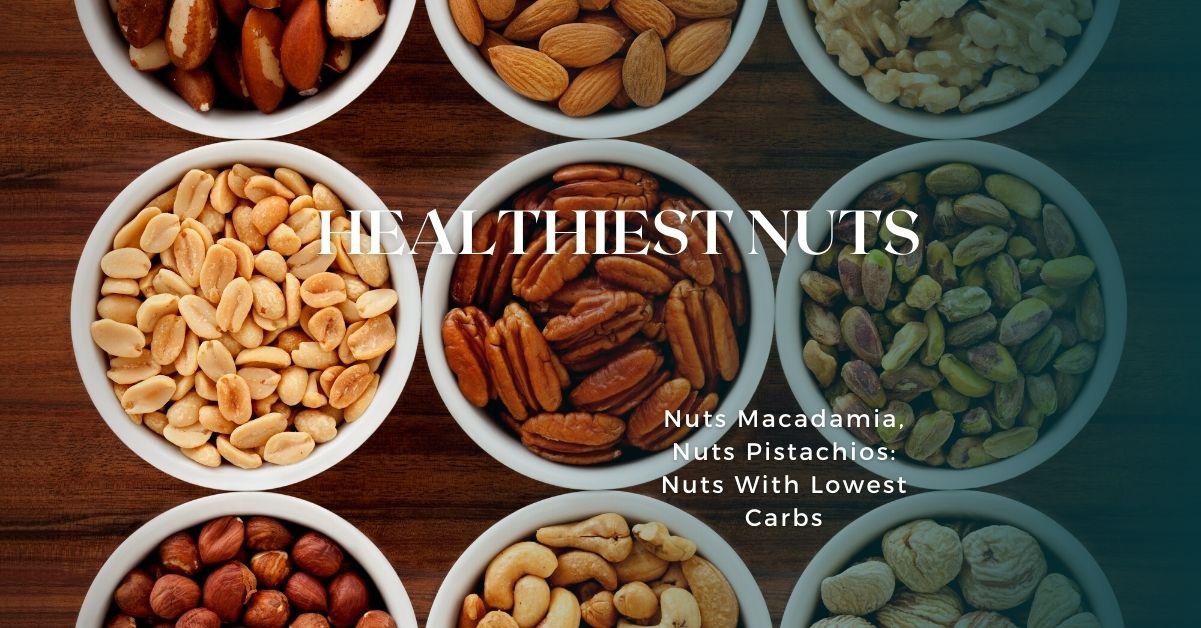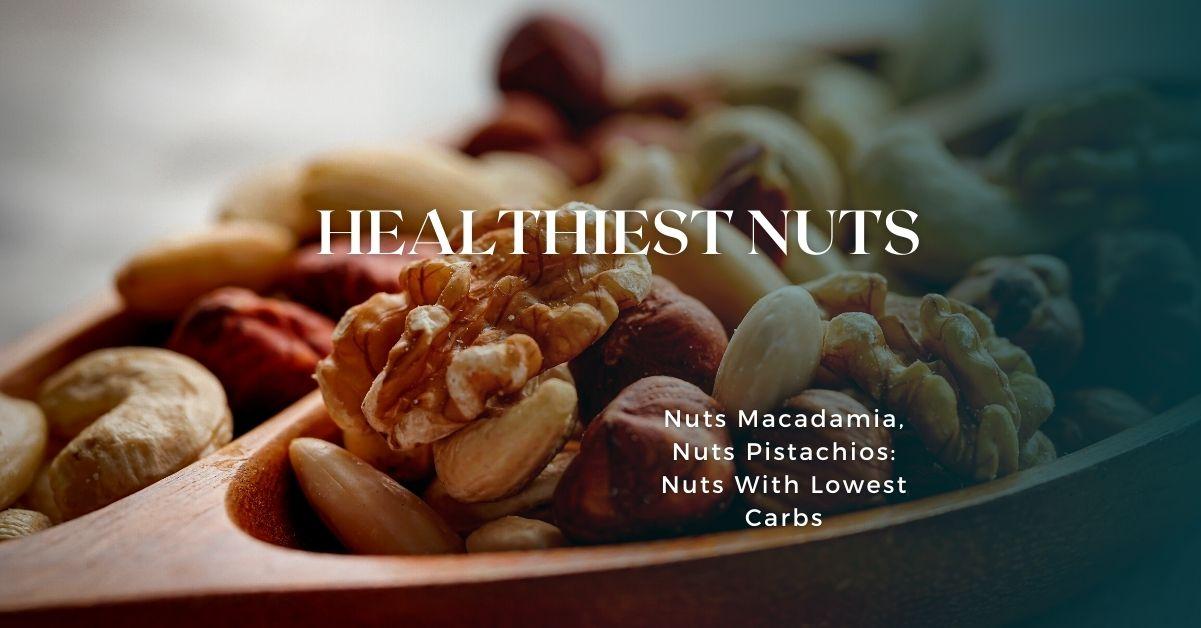Weight Mgmt: Nuts are a powerhouse of nutrition and can be a valuable part of any weight management plan when eaten in moderation. Packed with healthy fats, plant-based protein, and fiber, nuts help keep you full longer and curb unhealthy cravings. Despite being calorie-dense, studies show that including nuts in a balanced diet may support weight control rather than hinder it.
Understanding portion sizes and choosing the right types of nuts can make all the difference in reaching and maintaining your health goals.
Healthy Fats, Happy Heart: Why Macadamia, Pistachios, and Almonds Should Be Your Go-To Nuts
Macadamia Nuts are a delicious and nutritious addition to any diet. Macadamia Nut Health Benefits contain healthy fats, fiber, protein, and essential vitamins and minerals. Incorporating nuts into your diet can offer a wide range of benefits for your overall health and well-being. Here are four compelling reasons to include nuts in your diet for optimal health:
#1 – Heart Health:
Nuts are high in monounsaturated and polyunsaturated fats, known to be heart-healthy. Studies have shown that nuts can help lower cholesterol levels, reduce the risk of heart disease and stroke, and improve blood vessel function.
#2 – Weight Management:
Despite their high fat content, nuts can benefit weight management. Research suggests that nuts can increase feelings of fullness and lead to reduced calorie intake. Nuts also contain fiber, which can help regulate digestion and promote feelings of fullness.
#3 – Brain Function:
Nuts are rich in nutrients essential for brain health, including vitamin E, folate, and omega-3 fatty acids. Eating nuts has improved cognitive function, memory, and mood.
#4 – Diabetes Prevention:
Nuts are an excellent option for those looking to prevent or manage diabetes. Studies have shown that incorporating nuts into your diet can help improve blood sugar control and insulin sensitivity.
#5 – Antioxidant Protection
These nuts contain antioxidants like vitamin E, which can combat oxidative stress and reduce the risk of chronic diseases.
#6 – Bone Health:
Macadamia nuts contain calcium, magnesium, and phosphorus, promoting strong and healthy bones.
#7 -Skin and Hair Health
These nuts’ antioxidants and healthy fats can enhance skin elasticity and hair shine.
Incorporating nuts into your diet is easy and delicious. They can be eaten as a snack, added to salads or smoothies, or used as a topping for oatmeal or yogurt. Some of the best nuts to include in your diet include almonds, walnuts, pistachios, and cashews. By including nuts in your diet, you can improve your overall health and well-being in a tasty and convenient way.
Weight Mgmt – Top Nuts to Eat for Better Health
A nut is a simple dry fruit with one or two edible kernels inside a hard shell. Nuts are not just delicious snacks; they contain nutrients like fiber, protein, and antioxidants. They’re excellent energy sources, too, because they contain healthy fats called omega-3 fatty acids. Omega-3s help keep cholesterol levels low and protect against heart disease.
Almonds are rich in vitamin E and magnesium, while pistachios provide iron, zinc, and potassium. Walnuts are high in unsaturated fat and dietary fiber, while peanuts contain monounsaturated fat. Cashews are a good source of copper and manganese. And macadamia nuts offer a wealth of vitamins B6, D, and K2.
Eat This, Not That: Daily Nut Guide You Need!
The Australian Dietary Guidelines recommend 30 grams of nuts for adults on most days of the week.
One serving equals approximately 30 grams – or 1/3 of a cup (or one handful).
Since all nuts have a similar nutrient content, a wide variety of nuts can be included in a healthy diet. This equates to about:
| Nut | Calories (per 28g / 1 oz) | Protein (g) | Healthy Fats (g) | Key Nutrients | Recommended Daily Amount |
|---|---|---|---|---|---|
Almonds |
164 | 6g | 14g | Vitamin E, Magnesium, Fiber | 23 almonds |
Brazil Nuts |
187 | 4g | 19g | Selenium, Magnesium, Vitamin E | 2–4 nuts (very high in selenium) |
Cashews |
157 | 5g | 12g | Copper, Iron, Magnesium | 16–18 cashews |
Peanuts |
161 | 7g | 14g | Niacin, Folate, Vitamin E | 28 peanuts |
Hazelnuts |
178 | 4g | 17g | Vitamin E, Copper, Manganese | 20 hazelnuts |
Macadamia Nuts |
204 | 2g | 21g | Thiamine, Manganese, Monounsaturated Fats | 10–12 nuts |
Pecans |
196 | 3g | 20g | Zinc, Vitamin B1, Antioxidants | 15 pecan halves |
Pine Nuts |
191 | 4g | 19g | Magnesium, Iron, Vitamin K | 2 tbsp (about 167 kernels) |
Pistachios |
159 | 6g | 13g | Vitamin B6, Potassium, Fiber | 49 pistachios |
Walnuts |
185 | 4g | 18g | Omega-3s, Copper, Manganese | 14 halves |
Low Carb, Low-Calorie Snacks
| Snack Type / Snack Name | Main Ingredient | Description | Carb Count | Calories per Serving |
|---|
Low Carb, Low-Calorie Snacks
| Crispy Walnut Chips | Walnuts | Walnuts seasoned with herbs and baked until crispy, providing a satisfying crunch without the carbs. | 2g | 120 |
| Cashew Cucumber Bites | Cashews | Sliced cucumber with cashew nut spread on top, lightly salted. A fresh and crunchy snack with a low-calorie count. | 4g | 130 |
| Pistachio and Avocado Salad | Pistachios and Avocado | A refreshing salad made with mashed avocado mixed with pistachios and a dash of lemon, providing healthy fats and a low-carb crunch. | 5g | 170 |
| Macadamia Nut Energy Balls | Macadamia Nuts | No-bake energy balls made with ground macadamia nuts, chia seeds, and some stevia. Perfect for a quick, low-carb snack. | 4g | 160 |
| Almond Snack Bites | Almonds | Lightly roasted almonds, lightly salted with a squeeze of lemon juice for a refreshing flavor. | 3g | 150 |
| Snack Type / Snack Name | Main Ingredient | Description | Carb Count | Calories per Serving |
|---|
High Fat, Low Carb Snacks
| Peanut Butter & Almond Clusters | Almonds & Peanut Butter | Crunchy clusters made from almonds, bound together with creamy peanut butter. Rich in fats, low in carbs. | 6g | 250 |
| Coconut Pistachio Bars | Pistachios and Coconut | Pistachios and unsweetened shredded coconut mixed with a low-carb binder (e.g., egg white) provide a high-fat, low-carb energy bar. | 7g | 300 |
| Cheese and Walnut Slices | Walnuts and Cheese | A savory snack of sliced cheese (like cheddar or gouda) paired with walnuts for a satisfying high-fat, low-carb snack. | 2g | 220 |
| Almond Butter with Celery Sticks | Almond Butter | A simple snack of almond butter on celery sticks. High in fat and low in carbs, it’s an excellent snack for keto and low-carb diets. | 5g | 180 |
| Cashew Cheese Dip | Cashews | Cashews blended into a creamy dip with nutritional yeast, garlic, and lemon juice for a savory, high-fat, low-carb snack that pairs well with vegetables. | 3g | 210 |
| Hazelnut Dark Chocolate Bark | Hazelnuts and Dark Chocolate | Sugar-free dark chocolate with chopped hazelnuts creates a delicious, high-fat snack that satisfies chocolate cravings while keeping the carbs low. | 4g | 280 |
| Macadamia Nut and Coconut Fat Bombs | Macadamia Nuts & Coconut | It is a rich, buttery fat bomb made with macadamia nuts, coconut oil, and a bit of stevia for sweetness. Perfect for a high-fat, low-carb, satisfying snack. | 2g | 230 |
| Brazil Nut and Cheddar Bites | Brazil Nuts and Cheddar | A combination of rich Brazil nuts and sharp cheddar cheese for a filling, high-fat, low-carb snack. | 3g | 250 |
| Walnut Pesto Dip with Veggies | Walnuts | Homemade walnut pesto served with crunchy veggie sticks like cucumber, bell peppers, or celery. Nutty, flavorful, and rich in healthy fats. | 6g | 220 |
| Almond Joy Protein Balls | Almonds & Chocolate | Almonds mixed with cocoa powder and protein powder rolled into balls, and chilled for a high-fat, low-carb, and protein-packed snack. | 5g | 190 |
Conclusion – Weight mgmt & nuts
Incorporating nuts into your diet can be a smart strategy for effective weight mgmt. Despite being calorie-dense, nuts are packed with healthy fats, fiber, and protein, which promote satiety and reduce overeating. When eaten in moderation, they can support sustainable weight mgmt by helping control cravings and maintaining energy levels throughout the day.
Choosing the correct portion sizes and pairing nuts with other nutrient-rich foods can make a meaningful difference in your health journey. Remember, successful weight mgmt isn’t about restriction but balance, nourishment, and consistency. So go ahead—grab a handful of your favorite nuts and snack with purpose.
Source & Credits – Weight Mgmt
https://www.betterhealth.vic.gov.au/conditionsandtreatments/diabetes

BMI Index Calculator

Basal Metabolic Rate

Tdee Calculator
Share this:
- Click to share on Facebook (Opens in new window) Facebook
- Click to share on Pinterest (Opens in new window) Pinterest
- Click to share on LinkedIn (Opens in new window) LinkedIn
- Click to share on X (Opens in new window) X
- Click to share on Tumblr (Opens in new window) Tumblr
- Click to share on Bluesky (Opens in new window) Bluesky




Almonds and walnuts are particularly low in purines. Plus, they help reduce inflammation and are heart-healthy.
Subscribe to the channel and get the latest info
Nuts are indeed a nutritious and beneficial addition to a healthy diet. While they are high in calories due to their natural fat content, the fats in nuts are mostly unsaturated fats, which can be beneficial for heart health when consumed in moderation
Macadamia nuts are loaded with heart-healthy fats, like monounsaturated fats, which can help lower bad cholesterol levels. A win-win for your taste buds and your ticker!
Nutty party in my mouth! Love the combo of macadamias, almonds. Any creative recipe ideas to take these powerhouses to the next level? Thinking pesto, energy bites, or a sweet & salty trail mix…
Thank you very much for sharing, I learned a lot from your article.
Discover the Best Nuts to Eat & Boost Your Health!